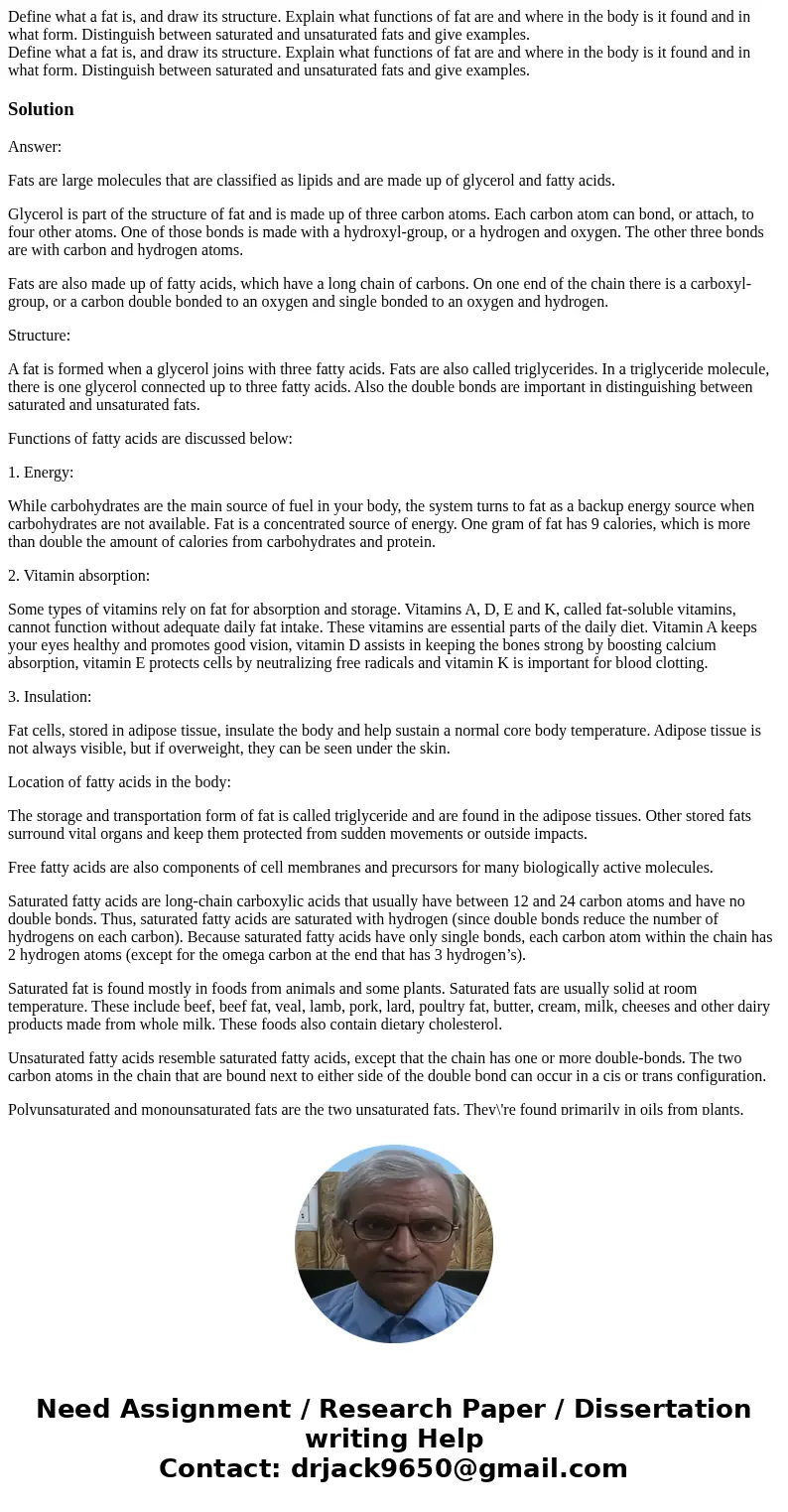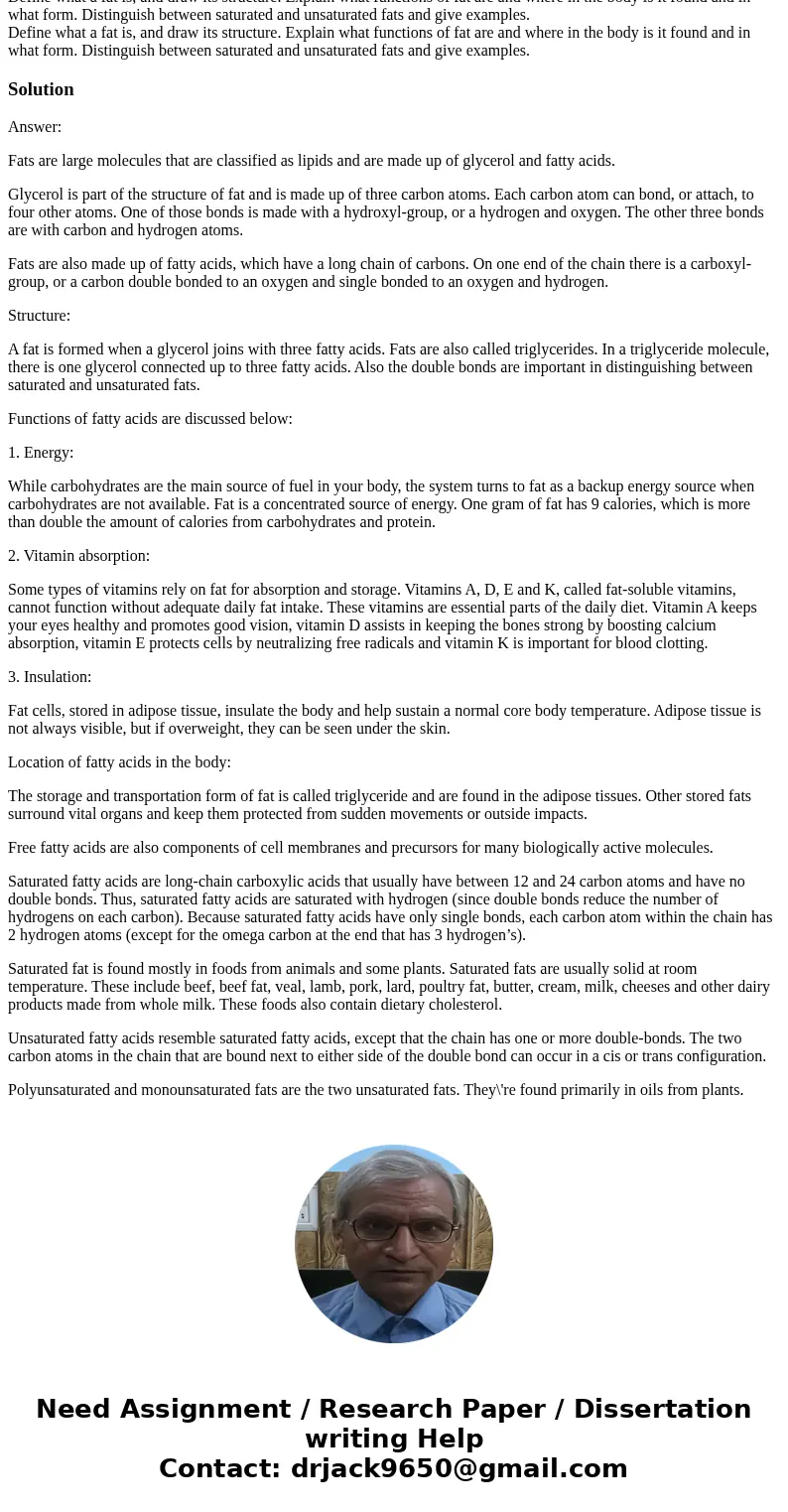Define what a fat is and draw its structure Explain what fun
Solution
Answer:
Fats are large molecules that are classified as lipids and are made up of glycerol and fatty acids.
Glycerol is part of the structure of fat and is made up of three carbon atoms. Each carbon atom can bond, or attach, to four other atoms. One of those bonds is made with a hydroxyl-group, or a hydrogen and oxygen. The other three bonds are with carbon and hydrogen atoms.
Fats are also made up of fatty acids, which have a long chain of carbons. On one end of the chain there is a carboxyl-group, or a carbon double bonded to an oxygen and single bonded to an oxygen and hydrogen.
Structure:
A fat is formed when a glycerol joins with three fatty acids. Fats are also called triglycerides. In a triglyceride molecule, there is one glycerol connected up to three fatty acids. Also the double bonds are important in distinguishing between saturated and unsaturated fats.
Functions of fatty acids are discussed below:
1. Energy:
While carbohydrates are the main source of fuel in your body, the system turns to fat as a backup energy source when carbohydrates are not available. Fat is a concentrated source of energy. One gram of fat has 9 calories, which is more than double the amount of calories from carbohydrates and protein.
2. Vitamin absorption:
Some types of vitamins rely on fat for absorption and storage. Vitamins A, D, E and K, called fat-soluble vitamins, cannot function without adequate daily fat intake. These vitamins are essential parts of the daily diet. Vitamin A keeps your eyes healthy and promotes good vision, vitamin D assists in keeping the bones strong by boosting calcium absorption, vitamin E protects cells by neutralizing free radicals and vitamin K is important for blood clotting.
3. Insulation:
Fat cells, stored in adipose tissue, insulate the body and help sustain a normal core body temperature. Adipose tissue is not always visible, but if overweight, they can be seen under the skin.
Location of fatty acids in the body:
The storage and transportation form of fat is called triglyceride and are found in the adipose tissues. Other stored fats surround vital organs and keep them protected from sudden movements or outside impacts.
Free fatty acids are also components of cell membranes and precursors for many biologically active molecules.
Saturated fatty acids are long-chain carboxylic acids that usually have between 12 and 24 carbon atoms and have no double bonds. Thus, saturated fatty acids are saturated with hydrogen (since double bonds reduce the number of hydrogens on each carbon). Because saturated fatty acids have only single bonds, each carbon atom within the chain has 2 hydrogen atoms (except for the omega carbon at the end that has 3 hydrogen’s).
Saturated fat is found mostly in foods from animals and some plants. Saturated fats are usually solid at room temperature. These include beef, beef fat, veal, lamb, pork, lard, poultry fat, butter, cream, milk, cheeses and other dairy products made from whole milk. These foods also contain dietary cholesterol.
Unsaturated fatty acids resemble saturated fatty acids, except that the chain has one or more double-bonds. The two carbon atoms in the chain that are bound next to either side of the double bond can occur in a cis or trans configuration.
Polyunsaturated and monounsaturated fats are the two unsaturated fats. They\'re found primarily in oils from plants.


 Homework Sourse
Homework Sourse